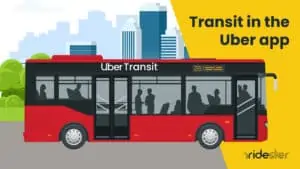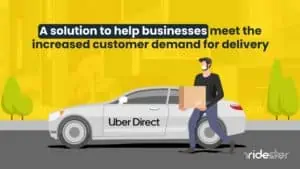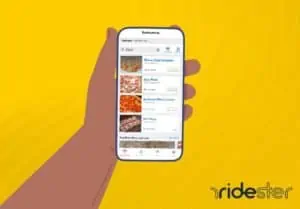Key Takeaways
- E-ZPass offers significant toll savings, up to 60% on the Pennsylvania Turnpike and 20% on certain New York and New Jersey tolls.
- It uses a transponder system for automatic toll payments, reducing delays and fuel consumption at toll booths.
- Compatible across 17 states, E-ZPass users must meet specific vehicle and account requirements for use.
- The system allows for convenient account management and replenishment online, with benefits extending to parking payments through E-ZPass Plus.
As a Pennsylvanian, you can save up to 60% on your tolls on the Pennsylvania Turnpike thanks to the E-ZPass Electronic Toll Collection System (ETC).
Several other cities in the US have also seen motorists cut their toll expenditures because of E-Zpass.
The Port Authority of New York and New Jersey noted that the ETC allows you to save up to 20% on tolls on the George Washington Bridge, Outerbridge Crossing, Holland Tunnel, Lincoln Tunnel, Goethals Bridge, and Bayonne Bridge.
Low tolls aren’t E-ZPass’s only benefit. To unlock the full power of this automated toll collection system, you need to understand what it is, how it works, and how to extract maximum value.
What Is E-ZPass?
E-ZPass is a technology that allows you to automatically pay for tolls on toll bridges, roads, and tunnels. These roads and bridges charge a small fee (toll) to allow governments to build and maintain new infrastructure without raising taxes for their citizens.
Without automated toll collection systems, you’d be forced to use cash to pay for tolls. Cash toll payments are notorious for causing:
- Delays at toll stations because of the time needed for motorists to stop, pay in cash, and receive change
- Traffic congestion
- Increased fuel consumption due to queueing at toll booths
- Soaring emissions from cars that spend more time on the road
Electronic toll collection technologies have been developed to address these issues. A 2000 study by the New Jersey Turnpike Authority revealed that E-ZPass had reduced delays by 85% and decreased fuel consumption on the state’s turnpike system by 1.2 million gallons a year (after only 13 years in operation).
Since then, the organization has been on a mission to incorporate other independent toll agencies across the US into the E-ZPass network to achieve nationwide coverage and offer these benefits to all Americans. So far, the company has added the NC Quick Pass in North Carolina and the I-PASS in Illinois to its roster.
How E-ZPass Works
E-ZPass works by attaching an electronic device called a transponder, or tag, to your vehicle’s windshield or license plate.
The transponder is pre-loaded with money, and as you approach E-ZPass toll roads, bridges, or tunnels, it activates and communicates the required information to the central database. The appropriate amount is deducted if your prepaid account is in good standing. If the account is running low on funds, a yellow light should indicate the same.
In that case, you have to resort to a cash payment or find a way to recharge your account quickly. That doesn’t mean a toll gate will rise up and down to bar you from entry. Most E-ZPass facilities don’t have toll gates.
Instead, they have E-ZPass lanes. Depending on the toll facility, some have lanes on the outside, others have them in the middle of the plaza, and others don’t. Also, the lanes have varying configurations.
Each toll facility manages lanes and traffic in the most efficient manner for their motorists. Still, the majority of the facilities use a standard configuration of lights.
- RED: This means the lane is closed, and you shouldn’t attempt to use it.
- GREEN: Indicates open lanes that use manual cash collection.
- FLASHING YELLOW: A lane that’s dedicated to E-ZPass.
To always get it right, pay keen attention to road signs. Speed limits, in particular, require strict observance.
The speed is dependent on the state and the traffic agency. Some agencies set the maximum speed at 55 miles per hour, while others require you to slow down to 30, or even 5, miles per hour.
Basic Safety Rules When Approaching an E-ZPass Lane
Follow these rules when heading toward a lane:
- Observe the indicated speed limit.
- Follow the toll attendants’ instructions.
- Don’t back out of a toll lane.
- Never alight from your vehicle.
How to Acquire an E-ZPass Transponder
You can acquire transponders from a service center or a local store at a small fee.
To purchase from a service center, visit your state’s E-ZPass website. For example, New York’s website is ez-passny.com. To find the official website, Google E-ZPass plus the name of your state.
On the website, apply through the online form. Alternatively, print the forms, fill them out, and fax or mail them to the address on the forms. It’ll take a few days for you to receive the transponder after application. Sometimes, it might take up to a week.
The device is free if you apply for a tag through the service center.
If you purchase it at a local store, it should cost you between $7 and $20. Prices differ depending on the state. For example, windshield transponders cost $7.40 in New Hampshire, and license plate transponders cost $13.49. In Ohio, the devices retail at $12.
Walmart, American Automobile Association (AAA) stores, and most area supermarkets carry the tags.
Only 17 states in the US accept E-ZPass:
- Pennsylvania
- Ohio
- West Virginia
- Indiana
- Illinois
- Kentucky
- Virginia
- North Carolina
- Maryland
- New Jersey
- Delaware
- New York
- Massachusetts
- New Hampshire
- Rhode Islands
- Maine
- Orlando Area in Florida
Negotiations for nationwide toll interoperability in the US are ongoing.
How to Open and Use Your E-ZPass Account
As an E-ZPass customer, you can open an account through the official website.
- Go to the account portal and ensure that you have:
- The license plate number that’s listed on your vehicle registration.
- Your car’s model, make, and year.
- Debit or credit card information.
- Register the account by filling in the required details.
- Determine if you want a business or personal account. If it’s a personal account, you must load it with a minimum initial payment of $25. If it’s a business account, load a minimum of $50. The minimum amount will vary based on your state.
- As you incur tolls, the automated toll collection system will deduct them from the initial payment.
- If the money is depleted or runs low, you can manually replenish your account or set it to deduct automatically from the card.
To recharge a prepaid E-ZPass account manually, you can mail the check to your state’s service center or visit it in person and replenish via debit or credit card.
Essential Details to Know About Your Account
You can access your account information via the Internet, mail, phone, or walk-in service centers. Accessing the information online is the most convenient method because you only have to log in with your username and password on the website.
On the website, you can:
- View your recent transactions.
- Make a violation appeal.
- Request for new transponders.
- Update vehicle information. For example, change the license plate number.
- Check discounts.
- Report any stolen or lost transponders.
- Replenish prepaid accounts.
- Check the balance.
To access your account information via telephone, check the official website for authorized phone numbers to contact customer service agents. When making the call, you should have the E-ZPass account number or transponder number.
For email statements, the requirements will vary by state. For example, if you live in Delaware, the state will charge you $1 monthly for email statements. The total cost is $8 annually because the state offers four free statements. The official website for your state should have all the details you need for email statements.
Your account will be reviewed regularly, and at times, the company will increase or decrease your minimum balance based on monthly usage or changes in toll rates.
The company can suspend accounts for:
- Speeding.
- Unpaid tolls.
- Insufficient funds.
- Not following the terms and conditions on the official website.
Closing an E-ZPass Account
To close your account, contact the service center and return the transponder(s). The service center allows you to mail the transponder, but you must use the original bag or wrap the tag in foil. Also, enclose a letter indicating the cancellation.
The service center isn’t liable if the device is lost in the mail. Once the center receives the device, they examine it. If it’s in perfect condition, you should receive any unused balance.
E-ZPass Plus
E-ZPass Plus allows you to pay for charges at participating facilities. A participating facility is an organization that has partnered with the E-ZPass.
For example, the state of Delaware partnered with the company to allow E-ZPass customers to pay for parking using the E-ZPass tag. You can use the transponder to pay for parking wherever you see the E-ZPass logo.
The service doesn’t cost extra, but your personal account must be in good standing. Most customers opt into the service for convenience.
Additional Information to Maximize the Value of E-ZPass
To extract maximum value, get a transponder where you drive. The rules for each state differ.
For example, New Jersey requires an $18 annual fee, but Pennsylvania asks for $3 per year. If you live in New Jersey but drive a truck in Pennsylvania, purchasing E-ZPass transponders from Pennsylvania will save you money.
State discounts also vary. Discounts in one state won’t necessarily apply in another. Some states offer seniors, daily commuters, and veterans discounts. Others will only offer discounts to daily commuters.
If you often drive in a state that has more discounts or better rates, get a transponder from that state.
Benefits of E-ZPass
Convenience for Travelers
The process is automatic; money no longer needs to change hands at toll booths. While you might have to slow down, opening the vehicle windows is unnecessary. Also, the equipment quickly reads the transponders to avoid any inconvenience.
With negotiations underway to add more E-ZPass locations, using it will become more convenient.
Saves Time and Money
E-ZPass rates are friendlier. It’s the reason you can save 33% on tolls in Ohio, and Pennsylvanians can save 60% on the Pennsylvania Turnpike.
Time-wise, you avoid the traffic in the manual lane. For business people with fleets of vehicles, a business account will accommodate the vehicles and save you a lot of money.
Usable Across Most of North-East USA
Although transponders are state-specific, all E-ZPass systems are part of the same electronic toll collection network. The tag should work in New York every bit as well as in Delaware.
The rates and rules might differ, but you don’t have to pay in cash when you cross state lines.
Frequently Asked Questions
Is There a Toll Pass That Works in All States?
No. E-ZPass has the widest coverage with 17 states. It’s also compatible with a few states’ systems (in states that use bespoke systems).
Can I Use My E-ZPass in Someone Else’s Vehicle?
Yes, but you must update your account information and add the vehicle’s license plate number. Without doing so, the system cannot match the vehicle to your account and perform the necessary deductions.
How Do I Add Money to My E-ZPass Account Online?
The most convenient method is to connect your E-ZPass account to a debit or credit card. If you do so, the account should replenish automatically, and you don’t have to go through a long process to recharge it.
What Do I Do If My E-ZPass Tag Develops Issues?
Visit a service center in your city with the defective transponder. The center will examine it and issue you a new one or repair it. If you lack time to visit the center, contact them by phone. They’ll advise you.
Final Thoughts
Data shows that the E-ZPass electronic toll collection system saves drivers over 1.8 million hours annually and truck drivers about 300,000 hours. You should try it to confirm if your personal experience tallies with the data!





